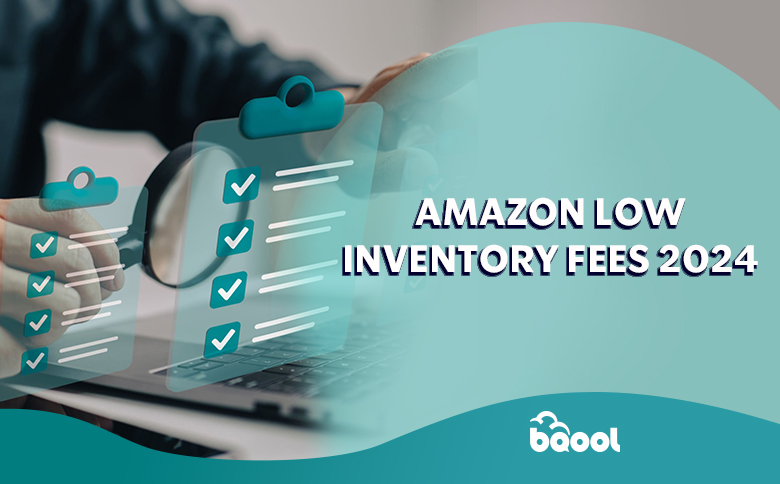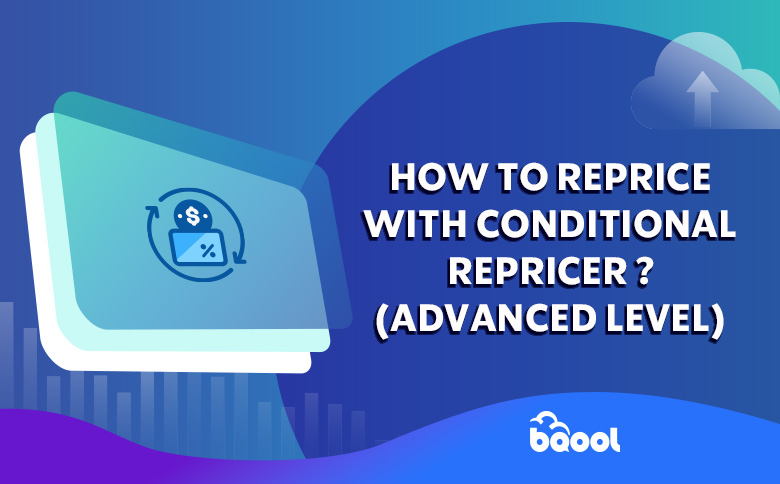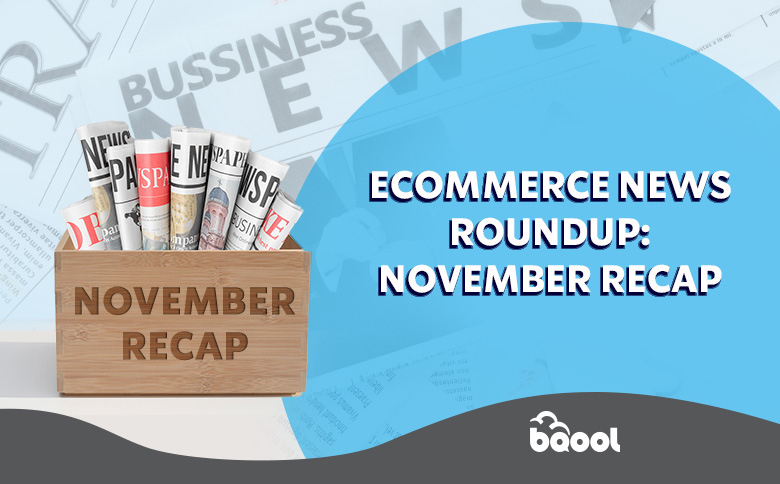Brace yourself, sellers! Amazon recently unveiled sweeping changes to its Fulfillment by Amazon (FBA) fees taking effect in 2024. From storage and removal rates to processing revisions spanning prep services, defects, sizes, and more, merchants must unravel an intricate...
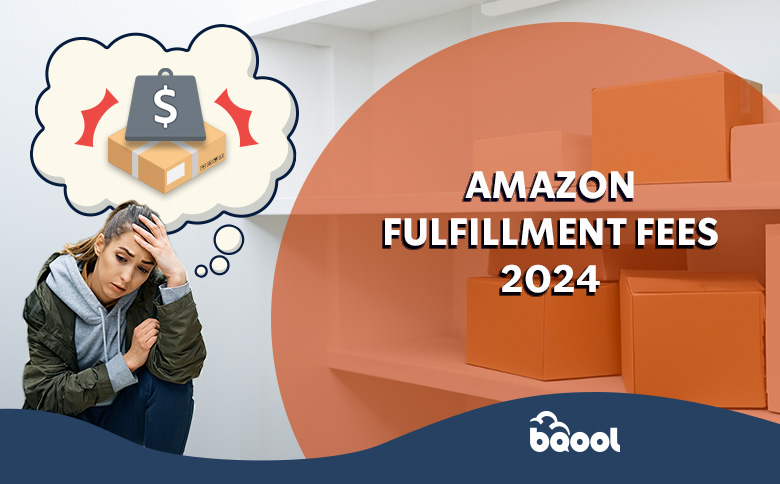
Brace yourself, sellers! Amazon recently unveiled sweeping changes to its Fulfillment by Amazon (FBA) fees taking effect in 2024. From storage and removal rates to processing revisions spanning prep services, defects, sizes, and more, merchants must unravel an intricate web of fee updates. Given the wide-ranging changes, we have condensed this complex maze of fee adjustments into one navigable guide. This comprehensive guide outlines the latest Amazon fees to help you anticipate and prepare for shifting costs.
We advise bookmarking this guide outlining adjustments across these Amazon fees as reference to help you navigate unpredictable waters in 2024 on Amazon.

 2024 US FBA Fulfillment Fee Changes
2024 US FBA Fulfillment Fee Changes
 April 1, 2024
April 1, 2024
Amazon charges monthly inventory storage fees for the space your inventory occupies in fulfillment centers. Starting April 1, 2024, off-peak monthly inventory storage fees (January-September) will be reduced by $0.09 per cubic foot for standard-size products. This change will first be reflected in May 2024 charges for storage that occurs in April 2024. There will be no change to off-peak monthly inventory storage fees for large bulky or extra-large (previously called oversized) products and peak monthly inventory storage fees for standard-size, large bulky, and extra-large products.
Changes to size tiers and fees
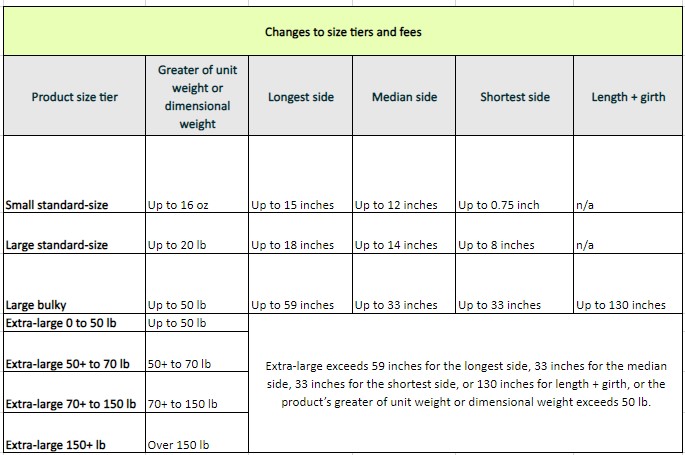
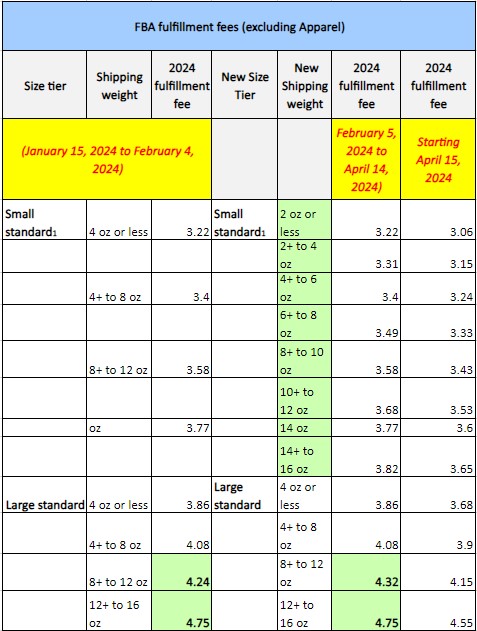
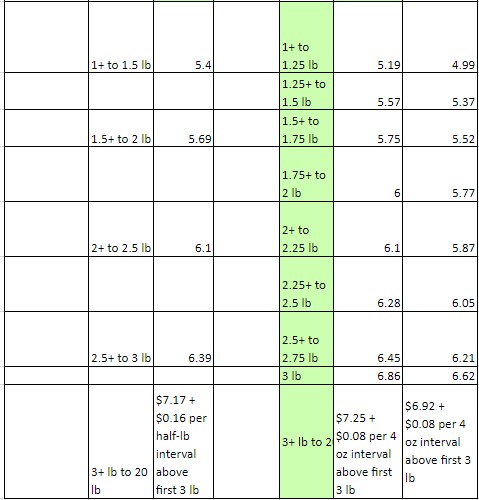
FBA fulfillment fees for non-standard size tiers (excluding Apparel)
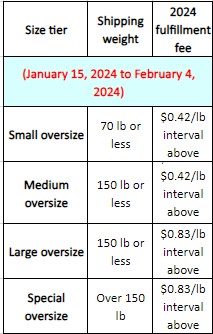
FBA fulfillment fees for non-standard size tiers (excluding Apparel) after February 5, 2024
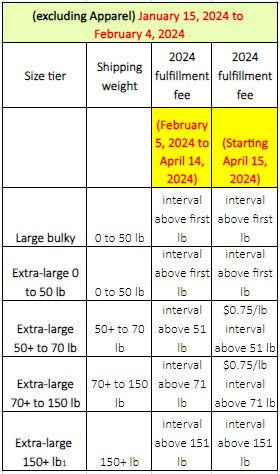
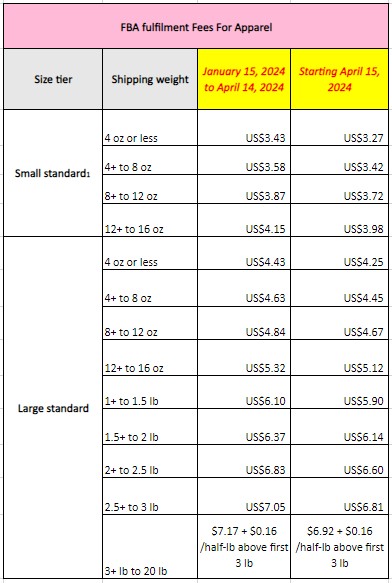
FBA fulfillment fees for non-standard size Apparel from January 15, 2024 to February 4, 2024
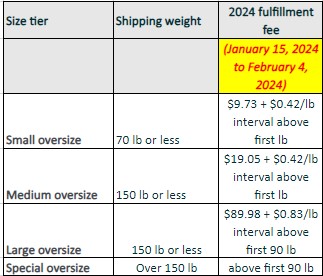
Table 2. FBA fulfillment fees for non-standard size Apparel after February 5, 2024
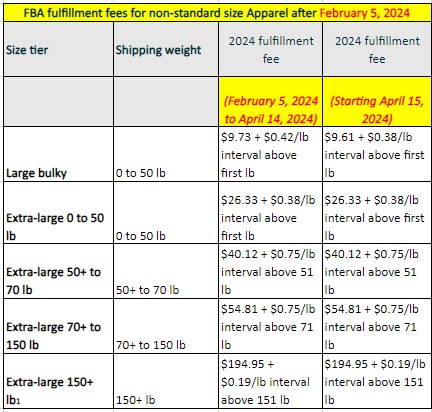
 April 1, 2024
April 1, 2024
Amazon will increase the granularity and rates for the storage utilization surcharge and will start applying the fee to Professional sellers with a storage utilization ratio above 22 weeks (about 5 months). Amazon will also exclude inventory aged between 0 and 30 days from the surcharge.
Go to the monthly storage fee page for more details.
 Aged Inventory Surcharge Changes
Aged Inventory Surcharge Changes
 February 15, 2024
February 15, 2024
Amazon will increase the aged inventory surcharge for inventory stored between 271-365 days, effective from February 15, 2024.
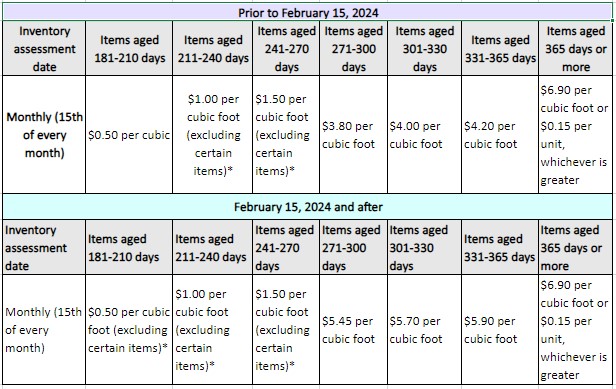
 2024 FBA Monthly Inventory Storage Fee
2024 FBA Monthly Inventory Storage Fee
 April 1, 2024
April 1, 2024
Starting April 1, 2024, Amazon will introduce more granular fee tiers to the storage utilization surcharge and will start applying the fee to Professional sellers with a storage utilization ratio above 22 weeks. Amazon will exclude inventory aged between 0 and 30 days from the surcharge. This change will first be reflected in May 2024 charges for storage that occurs in April 2024. Starting June 1, 2024, products that are auto replenished by Amazon Warehousing and Distribution are eligible for a storage utilization surcharge waiver. This change will first be reflected in July 2024 charges for storage that occurs in June 2024.
Before April 1, 2024
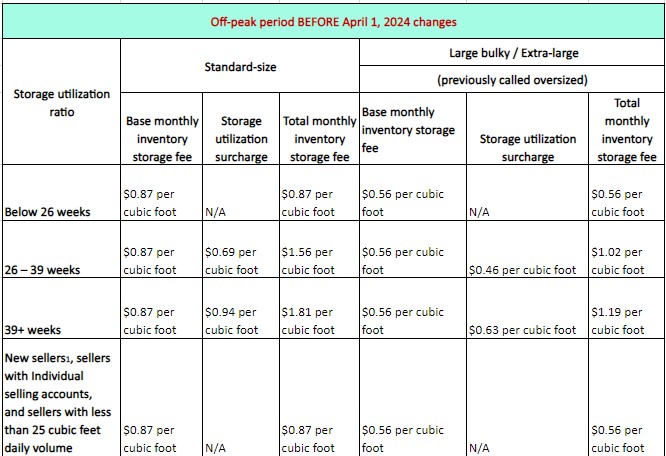
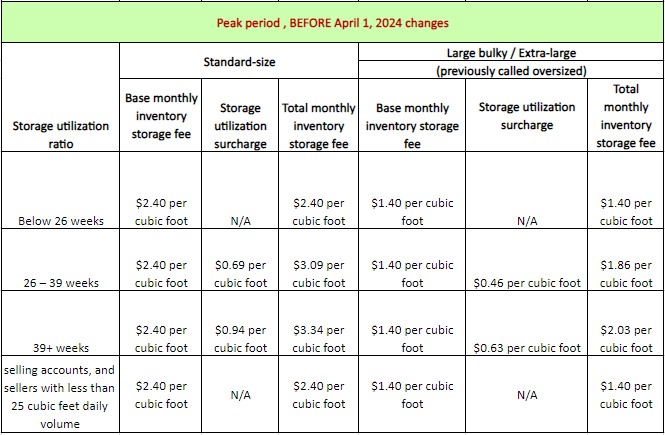
After April 1, 2024
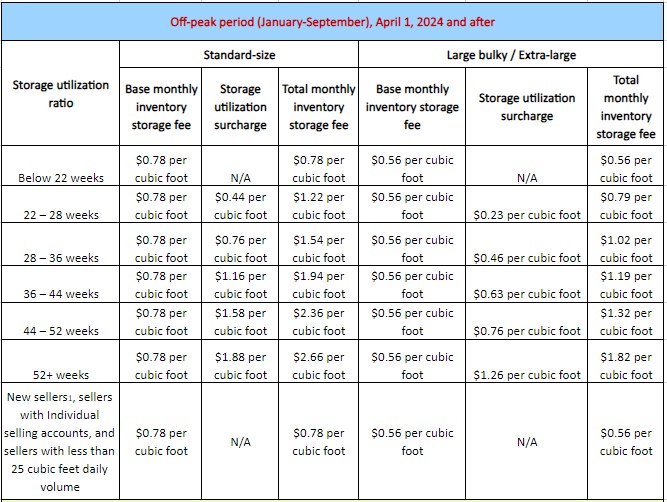
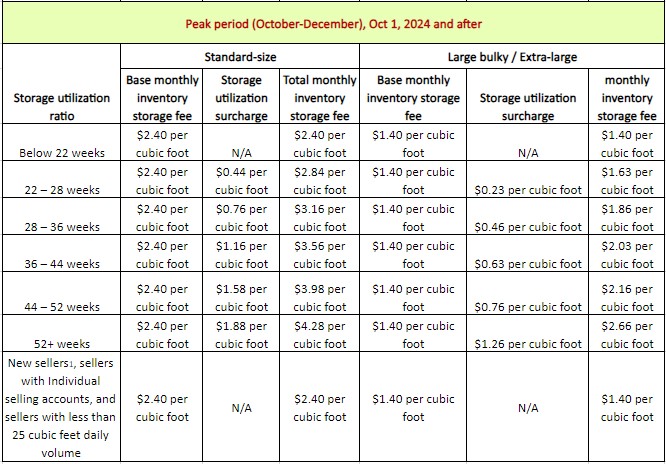
 Inbound Defect Fees
Inbound Defect Fees
 March 1, 2024
March 1, 2024
Starting on March 1, 2024, Amazon will introduce an inbound defect fee for shipments that are sent to a location that is different from the shipment plan, for domestic shipments that don’t arrive within 45 days of shipment creation, for international shipments that don’t arrive within 75 days of shipment creation, and for shipments that don’t arrive at our facilities within 30 days of the first shipment in a multiple destination shipping plan. This charge will address the additional cost to re-direct, receive, and process your shipment. For details, go to the inbound defect fees page.
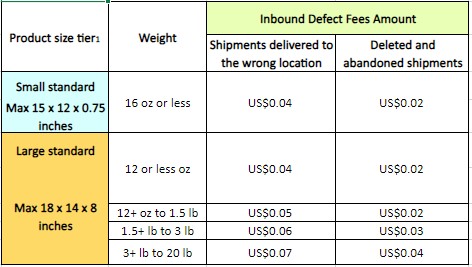
 2024 FBA Inbound Placement Service Fee
2024 FBA Inbound Placement Service Fee
 March 1, 2024
March 1, 2024
Placing inventory closer to customers in multiple fulfillment centers across the country is critical to delivering products faster and at a lower cost. The FBA inbound placement service fee for standard and large bulky sized products reflects the cost of distributing inventory to fulfillment centers close to customers. The fee will be effective as of March 1, 2024.
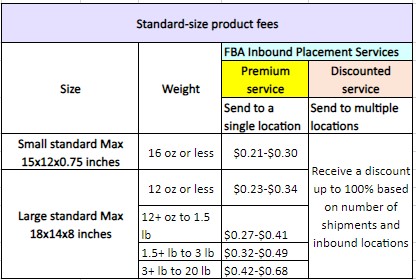
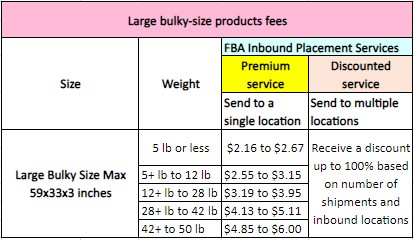
 2024 FBA removal, Disposal, and Liquidation Order Fee Changes
2024 FBA removal, Disposal, and Liquidation Order Fee Changes
 February 5, 2024
February 5, 2024
Amazon will increase removal and disposal fees due to the increased costs of these services. Liquidation fees remain unchanged. Go to removal, disposal and liquidation order fee page for more details. Liquidation fees will remain unchanged. Amazon applies two separate fees to each item you liquidate:
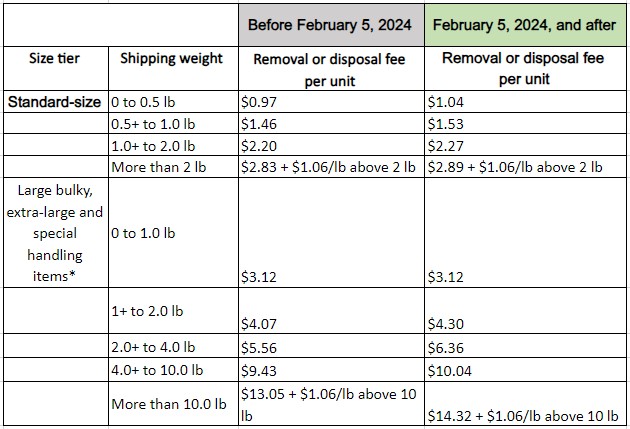
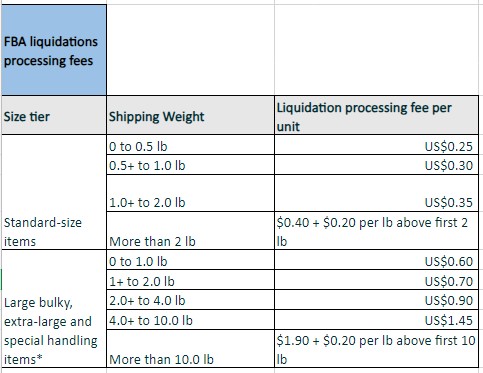
 FBA Prep Service Fees
FBA Prep Service Fees
 February 5, 2024
February 5, 2024
Most of the fees remain unchanged except for the fragile/glass and sharp that modify the total for fees. Amazon will increase prep service fees to match the latest operational cost. These fees will be effective starting February 5, 2024. Go to the FBA Prep Service for more details.
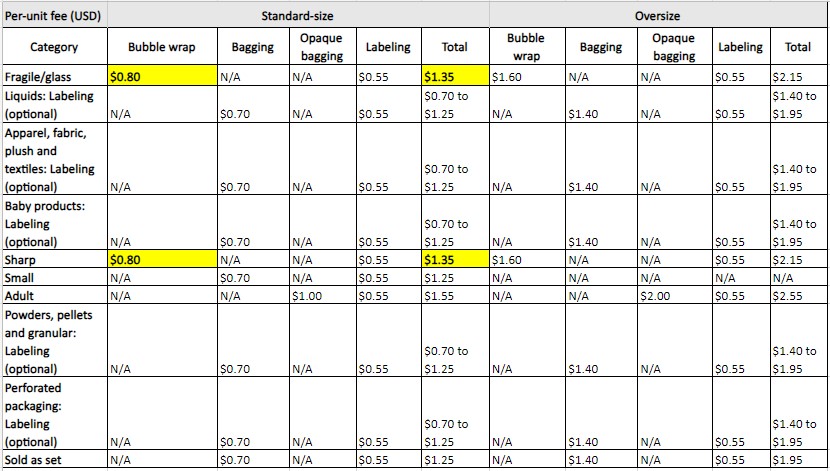
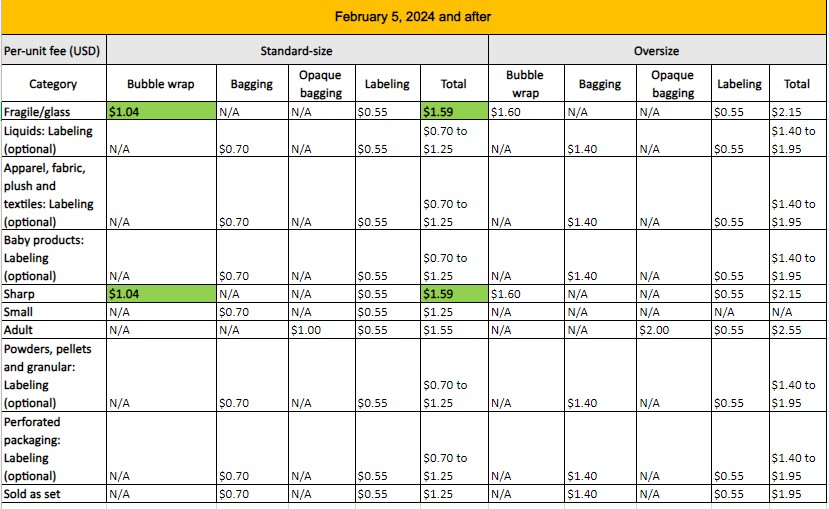
 2024 Returns Processing Fee Changes
2024 Returns Processing Fee Changes
 February 5 and June 1, 2024
February 5 and June 1, 2024
Amazon will expand the returns processing fee to apply to high return-rate products in all categories, excluding apparel and shoes. This fee will address the operational costs of returns and reduce waste. The returns processing fee will only apply to products that have the highest return rates relative to other products in their category and will apply starting June 1, 2024. Existing returns processing fees for apparel and shoes will remain unchanged on average.
Go to the Returns processing fee page for more details.
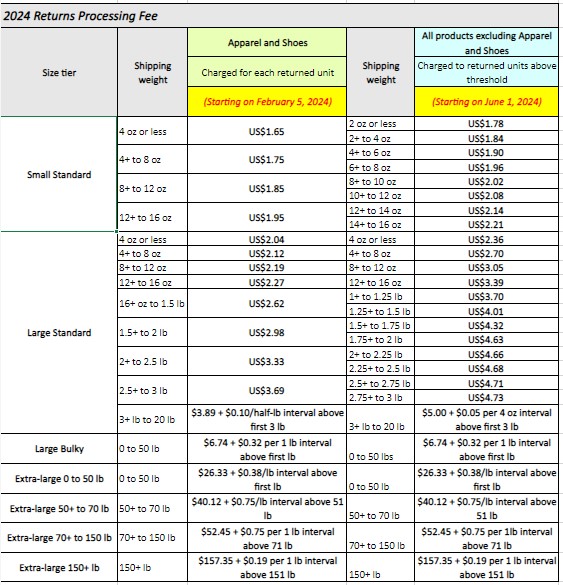
 Low-Inventory-Level Fee
Low-Inventory-Level Fee
 Starting April 1, 2024
Starting April 1, 2024
Amazon will introduce a low-inventory-level fee for standard-sized products. The fee applies if you carry consistently low levels of inventory relative to unit sales, as this inhibits Amazon’s ability to distribute products across its network, degrading delivery speeds and increasing its shipping costs. Sellers can avoid this fee by maintaining more than four weeks of inventory relative to sales. These fees will apply starting April 1, 2024. For more info about this fee change go to this article.
Why Did Amazon Make all These Changes this Year?
As we have highlighted in our previous articles covering Amazon monopolistic practices, fulfilment fees are highly profitable for Amazon. The decreases of some of the fees offer superficial relief while aggressive hikes and new fees fill shortfalls. Sellers bank on forecast reliability, but Amazon continuously shifts charges for its benefit, feigning concessions between squeezes. Merchants strain to survive on ever-shrinking margins as Amazon masks steadfast profit maximization with a rotating shell game of rates and penalties. For sellers, it is head Amazon wins, tails they lose. If you want to learn more about Amazon monopolistic practices you can read this article. If you want to learn more about the different changes that will occur in 2024 on Amazon, you can take a look at this page.
Decoding the intricate web of 2024 FBA fees requires all the sellers’ attention. Although Amazon has pitched these changes around efficiency, many of these changes impose higher costs that will erode sellers’ margins over time. With scant alternatives, vendors face squeezed bottom lines from opaque adjustments and penalties prioritizing Amazon’s revenues. and the dependence Amazon cultivates via fluid fees may only relax if legal challenges can shift power dynamics to foster fairer competition. For now, brace for more unpredictable policy changes and actively monitor updates of any kind that may take place in the upcoming year.
If you want to compare the 2024 fees with the ones from last year, you can read this article.
The post Amazon Fulfillment Fees 2024: The Ultimate Guide appeared first on BQool Blog.




